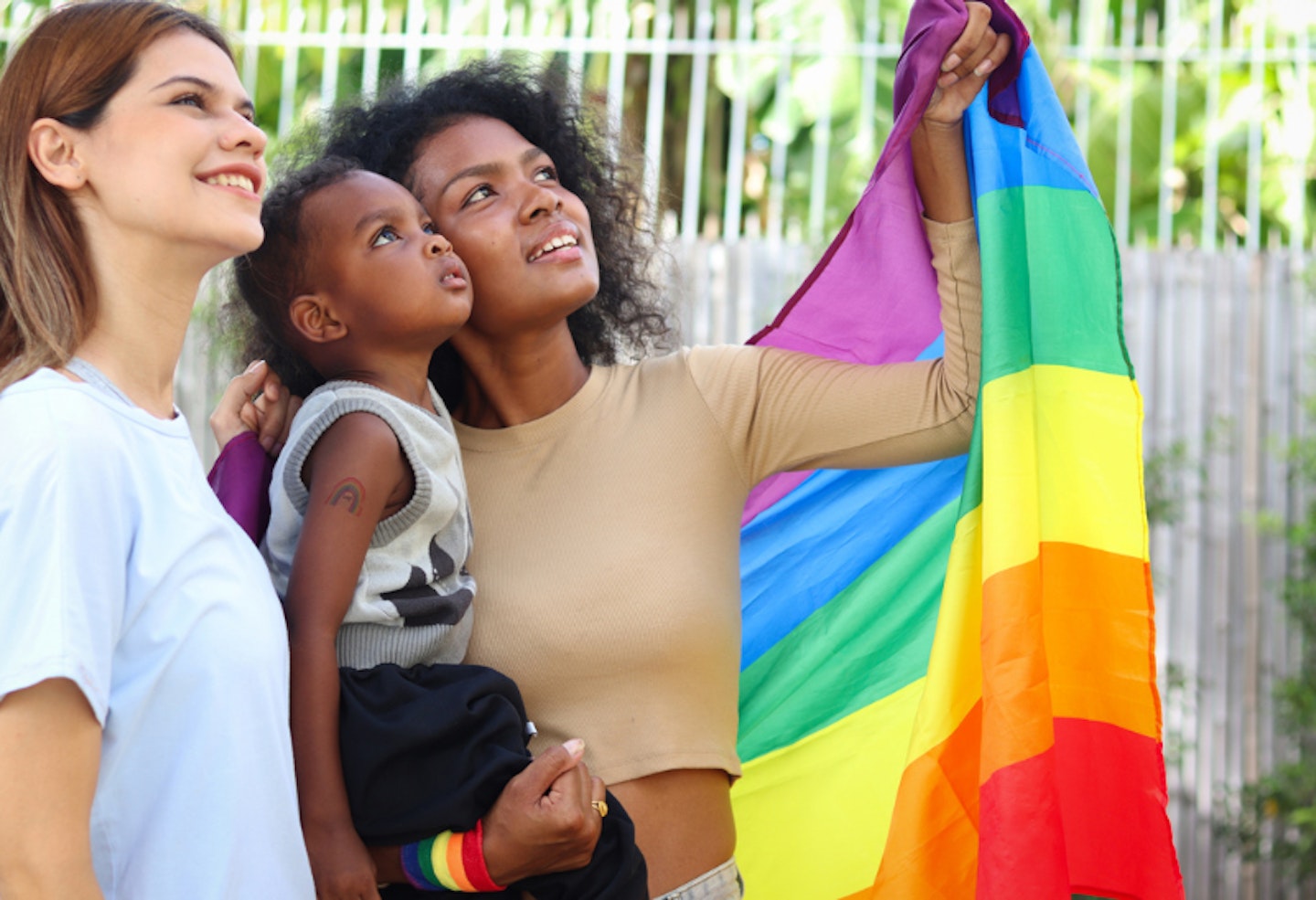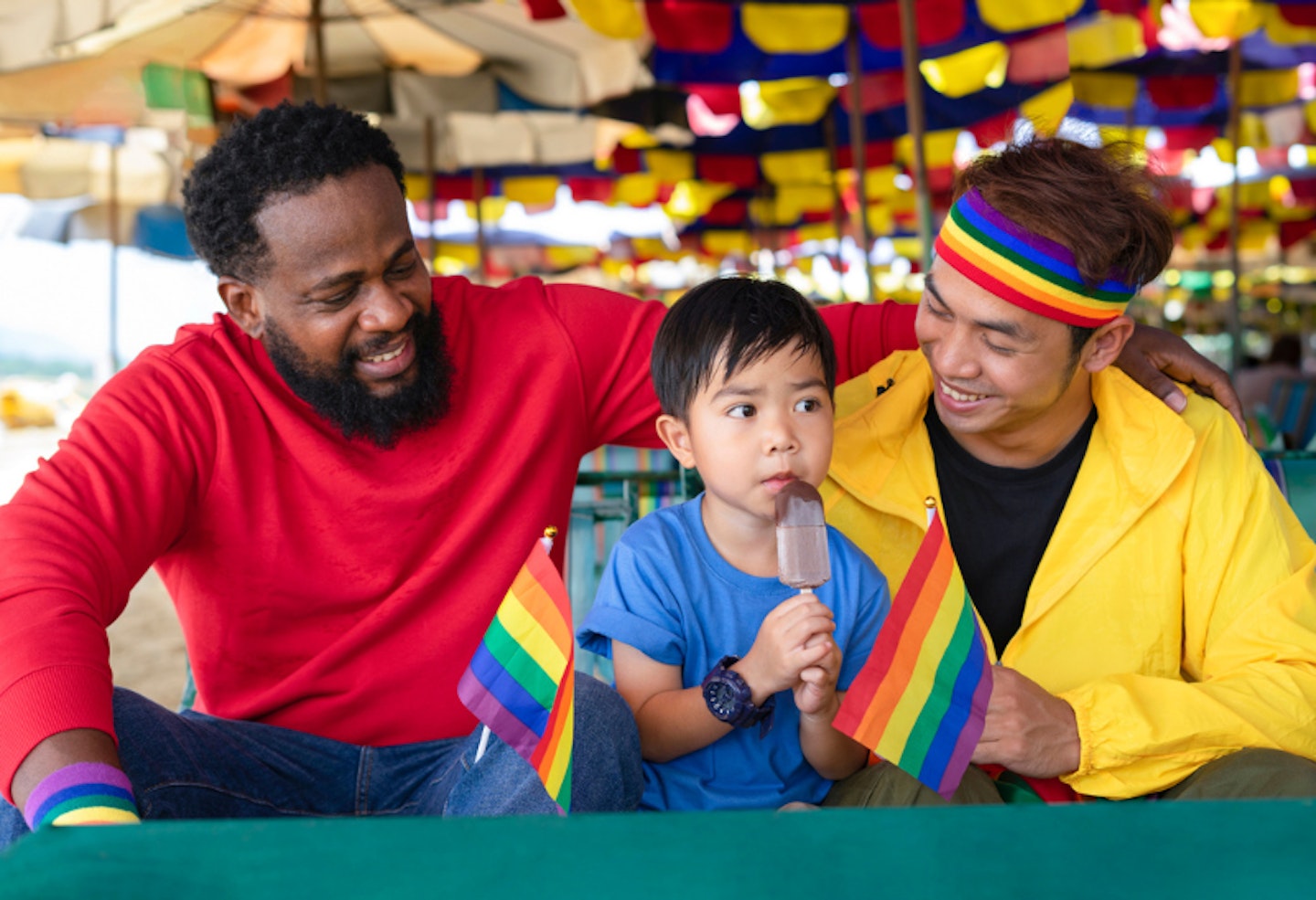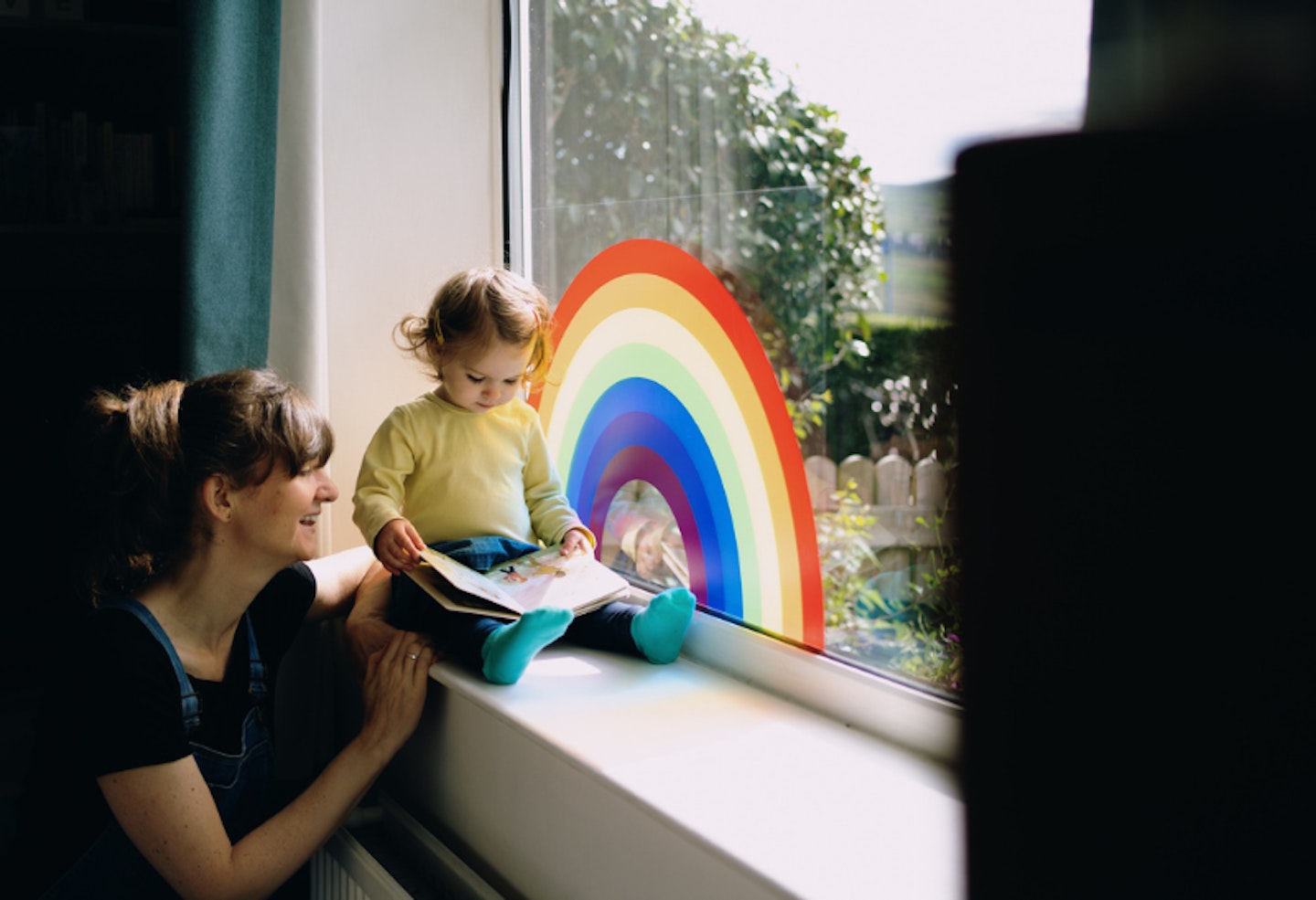June is Pride Month which is a time for communities to come together and show support and understanding for the LGBTQ+ community. Traditionally, Pride month commemorates the Stonewall Riots of 1969, and the beginning of the gay rights movement. Children may notice the rainbow flags people put up, or you might attend a festival or parade with your little one during June. But how do you explain it to them so they understand what it is about?
What is Pride Month?
Pride month takes place throughout the month of June to commemorate the Stonewall riots which began on 29 June 1969 at the Stonewall Inn. The gay club, in New York's Greenwich Village, was raided by police, on the pretence they were searching for illegal alcohol, and in a change from normal, people fought back for their rights and triggered five days of riots. It was the start of the gay rights movement, not just in America but around the world. Pride stands for Personal Rights in Defence and Education, and it was an organisation in 1966 set up for equal rights. However, the word has its own significant meaning, defined as, "a feeling of deep pleasure or satisfaction derived from one's own achievements or qualities", or even "consciousness of one's own dignity." It is an important message for everyone, and especially children, to understand and respect.

Why is Pride Month so important?
Pride Month might mean different things to different people, but is important to celebrate it. It symbolises acceptance, equality and diversity as well as raising awareness of the issues affecting the LGBTQ+ community. It is a demonstration of the dignity and respect that everyone deserves. While it may be hard to explain the history, or meaning of Pride Month to young children, it is important that they are aware it is happening and there are lots of things parents can do to help them understand.
Why is Pride celebrated with a rainbow flag?
Your little one might ask why there are lots of rainbow flags during June, and you can explain to them that they are for pride month. The rainbow flag was originally designed by Gilbert Baker in 1978 and it had eight colours, each representing something different.
Pink - sexuality
Red - life
Orange - healing
Yellow - sun
Green - nature
Turquoise - art
Indigo - harmony
Violet - soul
More recently, the flag now includes pink and blue for transgender and black and brown to represent black and Latinx people.

How to explain Pride Month to kids
It is important to explain pride Month to children in a way they understand. The history of the event may be too complicated, and perhaps just taking part in activities together will be a good way to answer questions, or start conversations. The BBC says it is important to discuss LGBTQ+ communities around the world and we have some tips to help you.
Keep discussions simple
It is always good to talk to children about how families can look different, whether they are made up of two mums, or two dads, a mum and a dad, or just a mum or just a dad. This can lead into discussions, and it is important to answer any questions truthfully. Children may ask if two men can marry, or two women and you can reassure them that you can marry anyone, regardless of their sex, and explain that marriage is about who you love.
While it may be tempting to talk about the Stonewall riots and the history of pride, and this may be appropriate for older children, younger children will not understand and will get confused. Keep any discussions simple, focusing on how we are all different and how that is okay and good, that we always respect and include everyone, regardless of who they love, how they look, their race or gender. Pride is about inclusivity, equality and respect. Children are not born with prejudice and by showing them we are all equal, they will come to understand the importance of Pride Month.
Pride Month at school
Children may well be learning about pride Month at school and you could check with school what they have been talking about. If they are discussing it at school, then they may have questions at home or it is a good opportunity to follow on what they were talking about in school with conversations at home.
Attend a parade or festival:
During Pride Month there will be lots of events taking place around the country and a great way to explain it to children is getting them involved. They will love the atmosphere and colours and they will see inclusivity and respect in action. A few Pride events you could attend are:
Pride in London - 29th June 2014. This is the UK's largest Pride event, with an aim to "raise awareness of LGBTQ+ issues and advocate for the freedoms that will enable everyone to live their lives on equal footing."
Pride Brighton & Hove - 3rd & 4th August 2024. This is the UK's biggest pride festival with acts like Girls Aloud and Mika performing and plenty of entertainment for all the family.
The Pink Picnic - 22nd June 2024. The Pink Picnic, in Salford, started in 2011 and aims "to work to build a stronger, diverse community that celebrates inclusion and equality; where LGBTQ+ people are represented, thrive and live authentically, in our city and beyond."
Pride Edinburgh - 22nd June 2024. This is Scotlands "longest running celebration of diversity." Pride Edinburgh ensures "the rainbow shines over the capital city."
Pride Cymru - 22nd and 23rd June 2024, Cardiff. Pride Cymru "is a volunteer-led charity that works to promote the elimination of discrimination be it on the grounds of sexual orientation, gender, race, religion, disability or impairment."
Pride Month Crafts and activities
Kids love crafts, or activities like baking which they can do with you or other family members, and this is a great time to talk about Pride Month too. Perhaps you could bake some rainbow cakes together and talk about what the rainbow represents, or paint a rainbow for your own window. You could make your own decorations or even your own flag. Alternatively you could play with diverse toys together.
Rich and his partner Lew, are adoptive parents to two children, and Rich suggests, "get cutouts of different people and then use them to make little families. We explain all the different types of family setup you can have."
Laura Smith, who in 2014 married her wife, Liz, making them the first female couple to be legally married in Westminster borough, says, "Pride is a bit like Christmas in our house. On 1 June, we get out all our rainbow decorations, headgear and clothes. Annabelle loves dressing up, and we dance around to Pride playlists. She’s too young to understand the history of Pride, but we’ve explained we’re supporting people just like us."
Read books with LGBTQ+ characters in together
Reading is a great way to help children understand Pride Month. It is a lovely way to spend time together, and will trigger discussions or simply normalise all types of families and people. There are some great LGBTQIA+ books for families to read together.
Keep conversations going
Whether you are attending a festival, reading some LGBTQIA+ books, talking about what they learn at school, or doing crafts together, it is important to keep doing it after June. Pride Month may be for the month of June but the need for understanding, inclusivity and acceptance is never ending and so even when pride Month is over, keeping talking to your children. If they have questions, answer them, keep reading the books about diverse families, and build on their understanding as they grow.

How to talk to your kids about LGBTQ+
It is important to be prepared and the earlier you can talk to your children the better. Answer questions honestly, and always positively. They may not understand everything straight away but they will get an idea of it, plus if they feel comfortable talking to you they won't be afraid to ask more questions as they grow and want to know more.
Parentclub, a parenting support group created by the Scottish Government, say, "it’s important to encourage your child to be inclusive of other people who aren’t the same as them or their family. Knowing and understanding more about different sexualities and gender identities can also help reduce prejudice and bullying."
The charity, Just Like Us, says that "82% of UK parents say it’s ‘important’ for their children to ‘learn that different types of families exist." Dominic Arnall, Chief Executive of Just Like Us, says, "we are really relieved to see that the overwhelming majority of parents support LGBT inclusive education and believe it’s important for their children to learn about diversity, including that families with LGBT+ people and gay parents exist."
Talking to your children about LGBTQ+ during during Pride Month and always, is important to create a safe space for them to grow in understanding and acceptance and ensure you nurture an environment of inclusivity at home, and when meeting other people and families, helping your little one to embrace differences.
Laura Healy is a Commercial Content Writer for Mother&Baby. She is a mum-of-two girls and loves writing about all things parenting, she is particularly interested in the toddler years and eco-friendly baby products, as well as children’s literature. She has a PhD in Creative Writing and has published short stories in the UK and Ireland, as well as previously writing freelance for her local paper.
